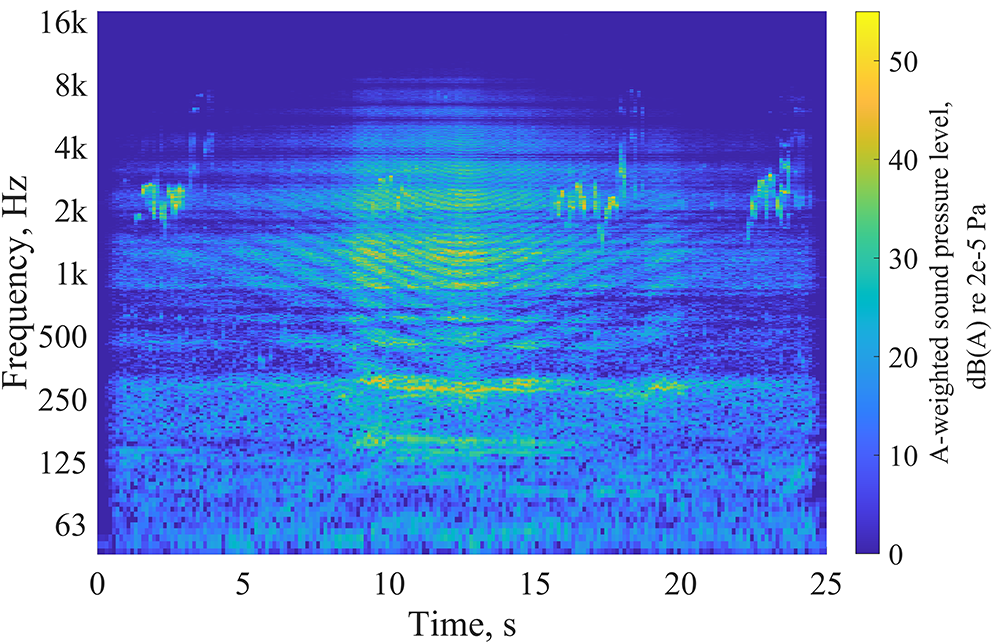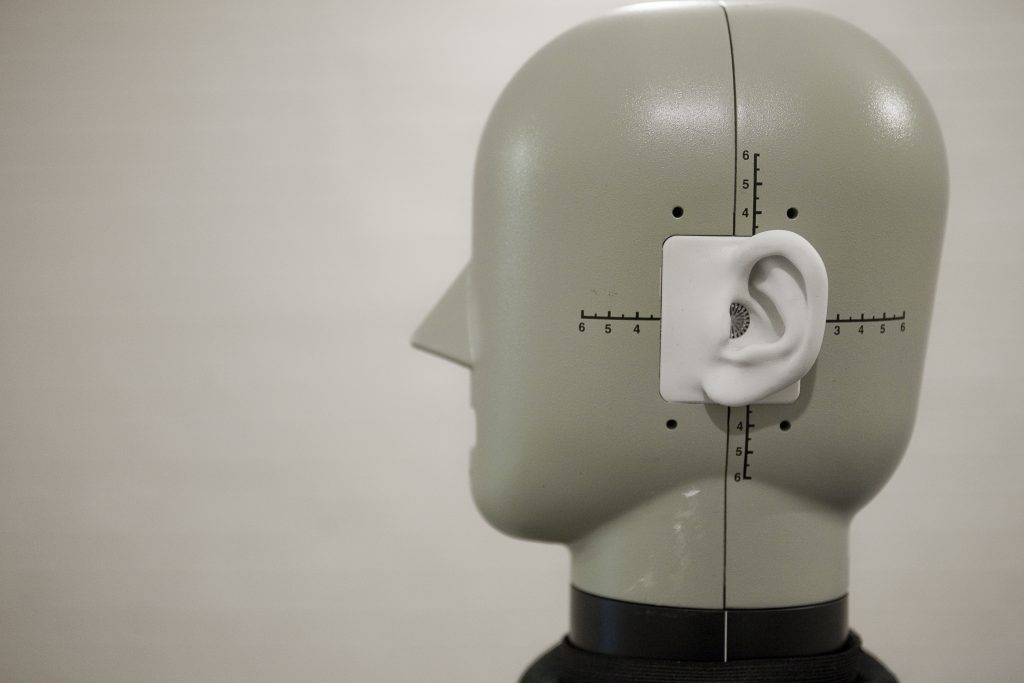Hybrid: Newton 241 or Microsoft Teams Join the meeting now Meeting ID: 317 714 654 648 2 Passcode: 23iw7yK6
Michael Lotinga will be discussing his recent conference and journal publications

Verified implementations of the Sottek psychoacoustic Hearing Model standardised sound quality metrics (ECMA-418-2 loudness, tonality and roughness)
Michael J B Lotinga, Matt Torjussen & Gil Felix Greco
Metrics for describing perceptual sound qualities have previously been developed from a variety of psychoacoustic models. The Sottek Hearing Model (SHM) offers a holistic approach to characterising perceptual sound quality and the SHM metrics for loudness, tonality and roughness have been defined in an international standard , ECMA-418-2. Implementations of the ECMA-418-2 standardised sound quality metrics have been developed, documented and verified using both simple test signals and field audio recordings of complex sound scenes, and have also been made available in the open-source software package ‘SQAT’ (Sound Quality Analysis Toolbox). The metrics, implementation, application and usage guidance are outlined alongside presentation of example verification cases, demonstrating the accuracy and capabilities of the tools.
Effects of exposure to unmanned aircraft systems sound: Applying machine learning and parametric clustered-data models to human response prediction
Michael J B Lotinga, Marc C Green, Antonio J Torija
Unconventional aviation technologies such as unmanned aircraft systems (UAS) are emerging around the world to meet demand for enhanced, sustainable mobility, logistics and other civil applications. Alongside the benefits, these novel vehicles introduce a new potential source of noise, which can impact areas in proximity to flightpaths and associated infrastructure, such as vertiports. Understanding of human responses to these sound sources is in early stages, with initial research suggesting that UAS could have sound characteristics that impart greater adverse responses in comparison with conventional modes of transport at similar levels of sound exposure. In this study, a listening experiment was undertaken to investigate subjective responses to UAS in controlled conditions. The experiment addressed noticeability and annoyance associated with a range of aircraft sounds embedded within realistic acoustic environments representing urban soundscapes. The experimental results have been used to develop predictive models, making use of machine learning techniques and parametric cluster-correlated regression models to identify important (psycho)acoustic features influencing responses to UAS sounds. These models will contribute to the objective of optimising flightpath routes in populated areas for a range of important factors, including community noise impact.
